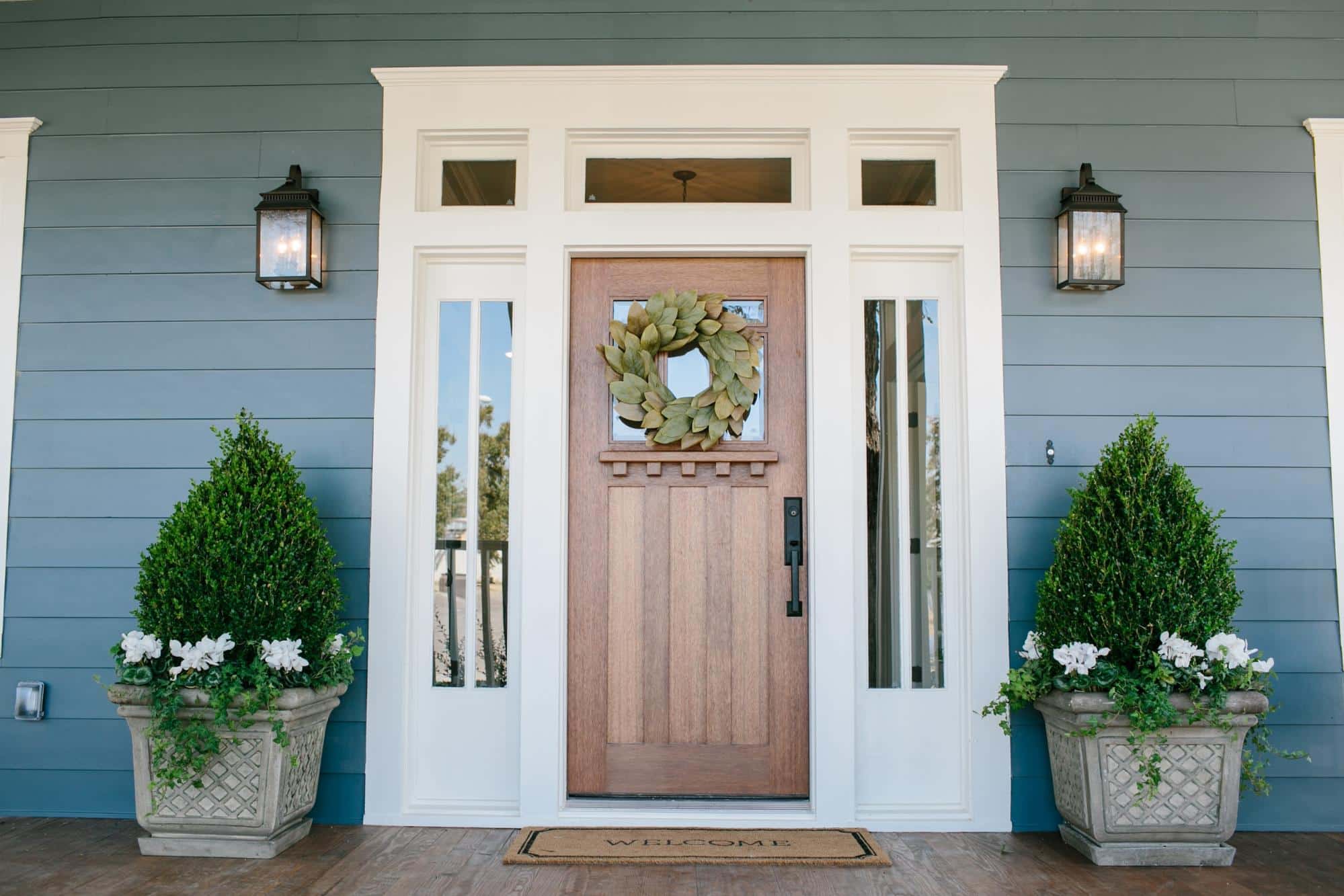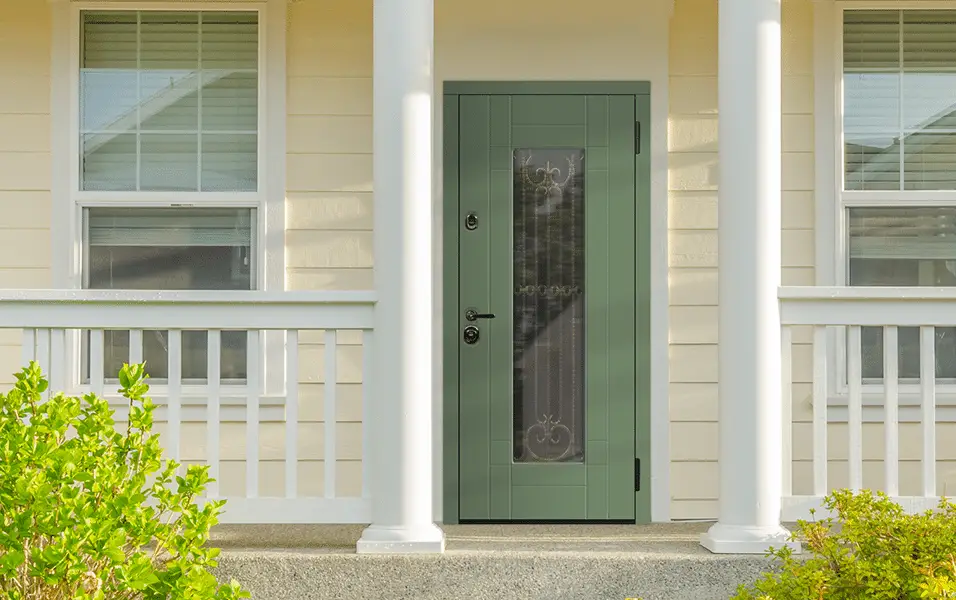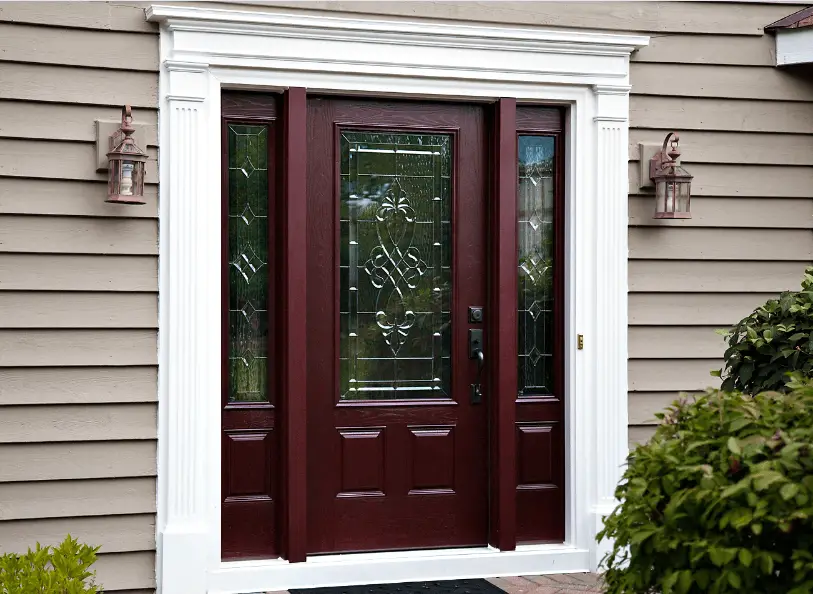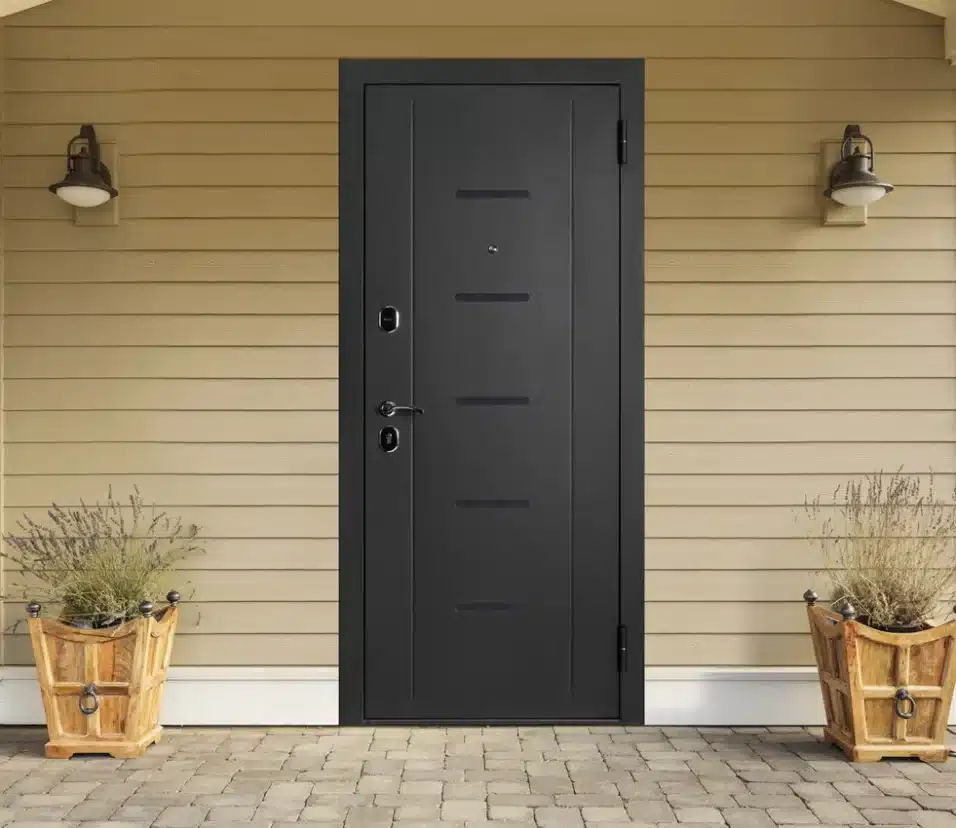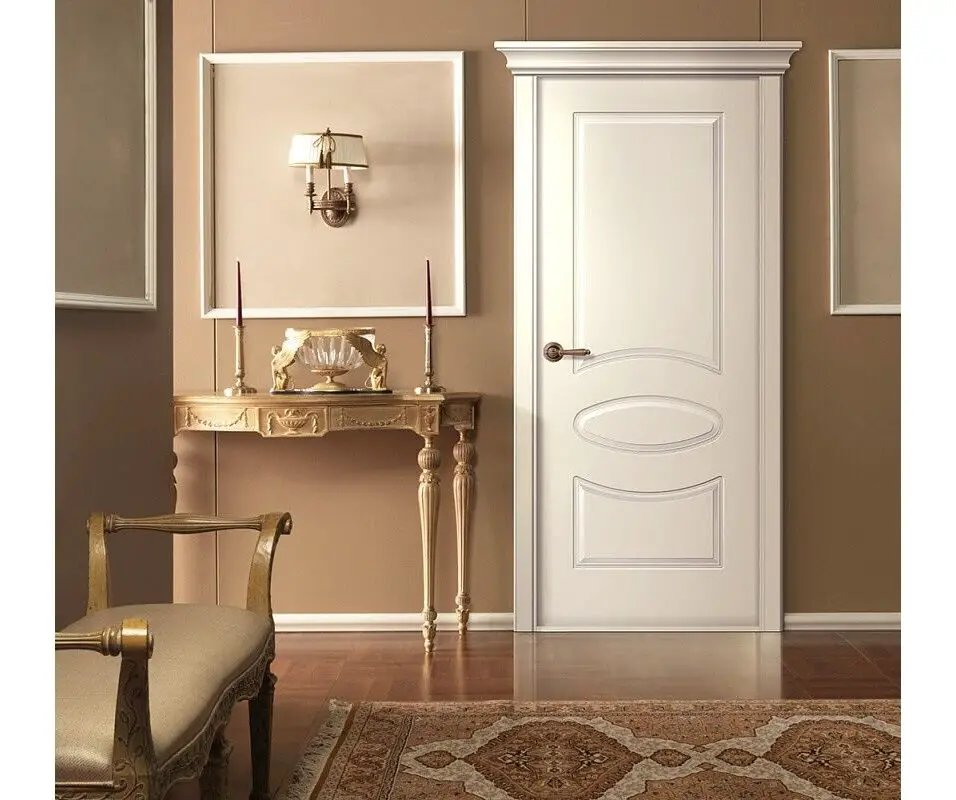How To Make A Simple Exterior Door
Introduction
How To Make A Simple Exterior Door: Crafting a simple exterior door can be a gratifying DIY project that combines practicality with creativity. Whether you’re looking to replace an existing door or add a touch of personalization to your home’s entrance, learning how to create a basic exterior door can empower you with new skills and a sense of accomplishment.
In this guide, we’ll walk you through the fundamental steps required to make a straightforward exterior door. From selecting the right materials to accurately measuring and cutting the panels, attaching hardware, and finishing the door, each phase of the process contributes to the creation of a functional and visually appealing entryway.
The allure of designing your own exterior door lies not only in the potential cost savings but also in the opportunity to tailor the door to your unique preferences. Whether you opt for a rustic wooden aesthetic or a modern minimalist design, crafting a door with your own hands adds a personal touch that can transform the entire character of your home’s exterior.
By delving into the art of door-making, you’re embarking on a journey that combines craftsmanship with practicality. Throughout this guide, you’ll gain insights into woodworking techniques and develop a deeper understanding of the components that culminate in a well-constructed exterior door.

Can you build your own exterior doors?
Building an interior or exterior door can seem like a daunting task to a lot of woodworkers. But making your own door isn’t as difficult as it sounds and it provides a lot of benefits. With the right tools and techniques, you can create the design that best matches your tastes, decor, and style of home.
Yes, it’s possible to build your own exterior doors if you have the necessary skills, tools, and access to appropriate materials. Building your own doors can be a rewarding project that allows you to customize the design, size, and features according to your preferences and needs.
To successfully build exterior doors, you’ll need to possess woodworking skills and knowledge of door construction techniques. You’ll require tools such as a saw, chisels, router, planer, clamps, measuring tools, and a variety of woodworking hand tools. Access to a suitable workspace is also essential to ensure precise measurements and proper assembly.
Choosing the right materials is crucial for the door’s durability and weather resistance. Solid wood, plywood, or engineered wood can be used for the door panels, and hardwoods like oak or mahogany are common choices due to their strength and resilience.
Keep in mind that exterior doors must be well insulated and properly weatherproofed to withstand outdoor conditions. This includes proper sealing, adding weatherstripping, and potentially including a glass insert that meets energy efficiency standards.
While building your own exterior doors can be a fulfilling DIY project, it’s also complex and time-consuming. Mistakes in construction can lead to doors that don’t fit well, lack proper insulation, or fail to provide adequate security. If you’re not confident in your woodworking skills, you might consider consulting resources or seeking assistance from experienced craftsmen to ensure the final product meets safety, security, and functional requirements.
Which material is suitable for making exterior doors?
If you’re asking yourself what is the best material for an exterior door, you’ve come to the right place. We are breaking down the different entry door material options so you can make the best choice for your home. The most common materials for front or exterior doors are steel, fiberglass, and wood.
Several materials are suitable for making exterior doors, each with its own advantages and considerations based on factors like durability, aesthetics, and weather resistance. Common materials include wood, steel, fiberglass, and aluminum.
Wood: Wood is a classic and versatile choice for exterior doors. Hardwoods like oak, mahogany, and cherry are durable and naturally resistant to elements. They offer a traditional look and can be customized with various finishes. However, wood doors may require regular maintenance to prevent warping, cracking, or rot.
Steel: Steel doors are highly secure and durable, making them ideal for exterior use. They are resistant to weather, insects, and fire. While they lack the natural warmth of wood, they can be painted or coated to mimic various finishes. However, steel doors may dent or scratch over time.
Fiberglass: Fiberglass doors mimic the look of wood but are more resistant to weather and require less maintenance. They are energy-efficient and can withstand extreme temperatures without warping or fading. Fiberglass doors are also resistant to insects and offer a smooth, paintable surface.
Aluminum: Aluminum doors are lightweight, durable, and resistant to corrosion, making them suitable for coastal or humid environments. They can be powder-coated with various finishes and are low-maintenance. However, they are not as energy-efficient as other materials and may conduct heat more easily.
Ultimately, the choice of material depends on factors like desired aesthetics, climate, maintenance preferences, and budget. It’s crucial to select a material that balances durability, energy efficiency, and the overall look you want for your exterior door.
How to make a temporary exterior door?
Position Plywood: Put one piece of plywood on the inside of the door frame and the other on the outside. Fish Wires: Bend two pieces of tie wire in half and fish one wire through each of the holes. Insert Outside Handle: Slide a short rebar or pipe through the wire loops on the outside of the door.
Creating a temporary exterior door can provide a functional solution for situations like home renovations or repairs. To make a basic temporary door, you’ll need a few essential materials. Begin by measuring the opening of the door frame to determine the dimensions of your temporary door.
Once you have the measurements, use a saw to cut a sheet of plywood or particleboard to the appropriate size. Ensure the door is slightly smaller than the frame to allow for smooth movement. Next, attach hinges to one side of the door, and then affix the other side of the hinges to the door frame. This enables the door to swing open and close.
Install a handle or latch on the door for easy operation. You can use a simple knob or handle that’s easy to grip. Finally, secure the temporary door in place using screws or temporary fasteners, ensuring it fits snugly within the door frame.
While a temporary exterior door may not have the longevity or features of a permanent door, it can provide a quick and functional solution to address immediate needs. It’s important to keep in mind that temporary doors might lack the weatherproofing, security, and insulation features of regular exterior doors. Once your temporary situation is resolved, you can remove the temporary door and consider more permanent solutions if needed.
How easy is it to replace an exterior door?
If you can handle basic carpentry tasks, you’ll have no trouble installing a new pre-hung entry door in a day. Figure on another day to finish the details and start painting the door. Front door paint adds personality and curb appeal.
Replacing an exterior door can range in difficulty depending on your familiarity with DIY tasks, the type of door you’re installing, and the condition of the existing frame. For individuals experienced in home improvement projects and equipped with the necessary tools, replacing an exterior door can be a manageable endeavor.
The process typically begins with accurate measurements of the door opening to ensure the new door fits correctly. Selecting the right replacement door, whether it’s a pre-hung unit including the frame or just the door slab, is the next step. Removing the old door involves unscrewing hinges and gently detaching the frame from the opening.
Preparing the opening for the new door may require adjustments to accommodate size differences. Clearing away debris and ensuring the opening is level and clean is crucial for a proper fit. Installing the new door involves either setting a pre-hung door in place and securing it or attaching a door slab to existing hinges.
Verifying that the door opens and closes smoothly, as well as ensuring its levelness and alignment, is essential for functionality. Adding hardware, such as handles and locks, follows, ensuring they’re properly aligned and secure. Finally, applying weatherstripping and sealants contributes to weatherproofing and energy efficiency.
While the replacement process can be relatively straightforward for those with DIY experience, it’s crucial to recognize your skill level and the specific needs of your project. If unsure, seeking professional assistance can ensure a successful installation that provides security, aesthetics, and functionality for your exterior door.
/House-front-door-GettyImages-668759417-58e07e3d5f9b58ef7e7d0004.jpg)
How do you maintain an exterior door?
The best way to clean entry doors is with warm water, mild soap, and a soft sponge or lint-free cloth. Maintaining your exterior door involves a combination of regular cleaning, thorough inspections, and timely repairs. Begin by cleaning the door’s surface with a mild detergent and water to remove dirt and grime. Periodically inspect the door for any visible damage, such as cracks, peeling paint, or water stains. Addressing these issues promptly prevents them from escalating.
If your door is painted or stained, keep an eye on the finish. When you notice signs of wear or fading, lightly sand the surface and apply a fresh coat of paint or stain to protect it from the elements. Check the weatherstripping and seals around the door for gaps or wear, replacing them as needed to maintain insulation and prevent drafts.
Maintain the hardware by lubricating hinges, locks, and handles to ensure they operate smoothly. Tighten any loose screws and address hardware issues to prevent potential security vulnerabilities. If your door is made of wood, be vigilant about rot prevention. Regularly inspect the bottom of the door for signs of rot and treat it with appropriate wood preservatives or fillers.
Glass panels should also be cleaned regularly to maintain visibility and appearance. Lastly, consider performing seasonal checks to address any specific issues that might arise due to weather changes. By following these steps, you can ensure that your exterior door remains not only functional and secure but also a welcoming and visually pleasing part of your home’s exterior.
How can I create a basic exterior door?
Crafting a basic exterior door requires a mix of woodworking expertise and meticulous execution. To start, select a suitable wood material, such as plywood or solid wood boards. Accurate measurements of the door frame opening are crucial to ensuring a proper fit.
Cut the wood into panels based on your measurements; at least two panels are needed for the front and back of the door. Assemble these panels using wood glue and screws, enhancing stability with crosspieces or rails. A door frame matching the door’s dimensions, can be either built or purchased. Attach the door to the frame using hinges, ensuring alignment and smooth movement. Install essential hardware, such as handles and locksets.
For a polished look, sand the door’s surface to remove rough edges. Applying a weather-resistant finish like paint, stain, or sealant protects the wood from the outdoor elements. Upon completing these steps, carefully install the door within the frame, adjusting as needed to ensure a snug fit and proper functionality.
It’s essential to prioritize safety and functionality during the crafting process. Depending on your familiarity with woodworking, consulting woodworking resources or seeking advice from experienced craftsmen can provide valuable insights to ensure the final product meets your requirements and stands up to the demands of an exterior door.
What materials do I need for a simple exterior door?
Wood glue plays a pivotal role in creating a strong bond between the panels, ensuring the door’s stability and longevity. Proper screws, chosen to suit the wood type, will be essential for attaching the panels and any reinforcing components. Hinges are a critical element, facilitating the door’s movement and alignment within a frame that matches the door’s dimensions.
For weather resistance and a polished appearance, finish the door with paint, stain, or a protective sealant. Sandpaper of varying grits will be your ally in creating a smooth, refined surface. The tools you’ll need include a saw for precise panel cutting, a drill for attaching hardware and making necessary holes, and sanding tools to perfect the door’s surface.
What are the main steps for making a straightforward exterior door?
Creating a straightforward exterior door involves a systematic process to guarantee its strength, functionality, and visual appeal.
Commence with a judicious selection of wood material, such as plywood or solid wood boards. Prioritize treated or naturally weather-resistant wood to fortify the door’s resilience against outdoor elements.
Accurate measurements are pivotal; they dictate the door’s fit. Cut the wood panels using a saw, crafting the front and back panels based on the measurements.
Assemble the panels by aligning them side by side. Employ wood glue and screws to firmly secure the connection. Integrate crosspieces or rails to augment the door’s stability, ensuring it can withstand regular use.
Hardware installation is a crucial step. Attach hinges to one side of the door panel, subsequently securing them to the door frame. On the opposite side, install a handle, lockset, and any desired fixtures, enhancing the door’s functionality and security.
The finishing touch involves sanding the door’s surfaces, eliminating any rough edges, and ensuring a polished appearance. Weather resistance can be fortified by applying paint, stain, or a protective sealant.
This systematic sequence of steps, from material selection to finishing, paves the way for crafting a straightforward exterior door that not only harmonizes with your home’s aesthetics but also serves as a reliable and inviting entryway.

Conclusion
Venturing into the realm of crafting a simple exterior door unveils a world of creativity, craftsmanship, and personalization. Through the steps outlined in this guide, you’ve learned that making a basic exterior door is not just about assembling materials; it’s about embracing a fulfilling DIY experience that yields a functional and distinctive entryway.
As you’ve discovered, the process of selecting suitable materials, measuring and cutting panels, attaching hardware, and adding finishing touches is a fusion of art and skill. The result is more than just a door; it’s a tangible representation of your efforts and ingenuity, enhancing the curb appeal of your home.
Creating your own exterior door allows you to infuse your personal style into a functional element of your living space. Whether your design leans towards traditional elegance or modern sleekness, the door becomes a canvas for your imagination. Moreover, the skills acquired during this process can extend beyond this project, empowering you to undertake future woodworking endeavors with greater confidence.
In the end, the simple exterior door you’ve created serves as a testimony to your ability to transform raw materials into a functional and aesthetically pleasing entryway. It reflects not only your dedication to craftsmanship but also your commitment to enhancing your living environment with a touch of your own creativity and resourcefulness.



